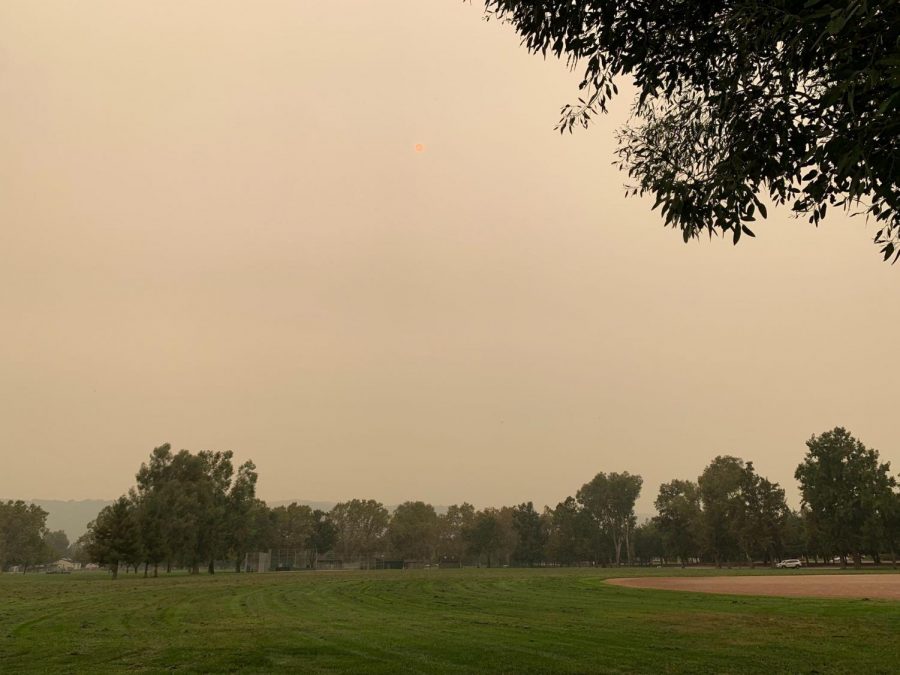What is the environmental cost of online school?
Forest fires, an effect of human caused global warming, resulted in heavy smoke around California in September.
April 25, 2021
The 2020-2021 school year has been mostly online, with students using video conferencing applications like Zoom to take classes. That, however, comes at a cost, especially to the environment.
Therefore, the question must be asked: how does Amador Valley contribute?
The Math
This year, normally, students have around 4 hours of Zoom usage per day, or around 16 hours of Zoom usage a week. With around 40 weeks of school this year, the average student spends around a total of 640 hours in a Zoom call this year.
With the 2,700 students at Amador, the numbers total up to around 1.8 million hours of Zoom calling throughout the entire school year from just Amador.
In a paper published on Resources, Conservation & Recycling, researchers say one hour of video conference streaming results in at most 12 liters of water and one kilogram of carbon dioxide.
This means that it takes around 22 million liters of water and 1.8 million kilograms of carbon dioxide to support Amador’s online learning this year.
To visualize this, totally, Amador will use up all the water – and more – from around nine Olympic swimming pools, which each contain around 2.5 million liters of water.
In addition to that, Amador produced more than 1,800 metric tons of carbon dioxide this year. 165 tree seedlings growing for a year can counteract one metric ton of carbon dioxide, meaning that Amador needs to plant more than 300 thousand trees to counteract all the carbon dioxide students produced in only one year.
Why is this important?
Amador, in one year alone (only calculating for Zoom usage) uses nine swimming pools of water and would need 300 thousand trees to be planted to counteract its damage to the environment. Why does this matter?
“The usage is above my expectations. I expected zoom to save my water and natural resource usage, but it still used quite a lot. I think this is an issue that should be considered, especially if as a district, we can do better,” explains Grace Chen (‘21).
What are some actions that can be taken?
In fact, leaving cameras off during a Zoom meeting can reduce the environmental costs by over 96%. With many teachers and the district enforcing rules saying that students must turn on their cameras, some wonder if it is a good idea in terms of environmental awareness.
“Given that the information is correct, I think we should turn off cameras while the teachers are teaching in class. The district is hung up on ‘social interaction,’ but how much do you really get out of turning on cameras in class, especially while the teacher is teaching? Maybe in the beginning or end of class, you can make students turn on cameras, but otherwise it’s damaging to the environment,” says Lucas Zhong (‘23).




